The Hotel Columbia is the Tenderloin’s trajectory in built form. Opened as a mid-range residential hotel in 1911, with its 120+ rooms part of a San Francisco SRO stock that once exceeded 90,000 units, it slid downmarket through owner neglect, regulatory pressure, and popular stigmatization. Then, with the area once again in demand as money and tourists flooded back into downtown SF, it was partially converted into a tourist hostel, the Orange Village Hostel. The 1981 Hotel Unit Conversion and Demolition Ordinance, which regulates whether and how an SRO could be demolished or converted into another use, serves as a fragile legal bulwark maintaining the rest of the Columbia as flexible, cheap (and maybe a little shabby) SRO housing. An incredible SFWeekly article from 1996, “Heartbreak Hotel”, described life at the Columbia in the 1990s better than I ever could:
“The building is dirt-encrusted, fire-scarred, cockroach-infested. The tenants who live there—many of whom have been homeless, or might be homeless, and who subsist on payments of public money far below poverty level—are, in many cases, in dire need of mental health or substance abuse services, stranded in small rooms, warehoused, as it were, within the walls that shelter them…Yet it remains: In San Francisco, the residential hotel is the single largest source of housing for those who would otherwise be on the streets, and, in the case of the Columbia, many of the people who live there are happy to call it home. This, then, is their world.”
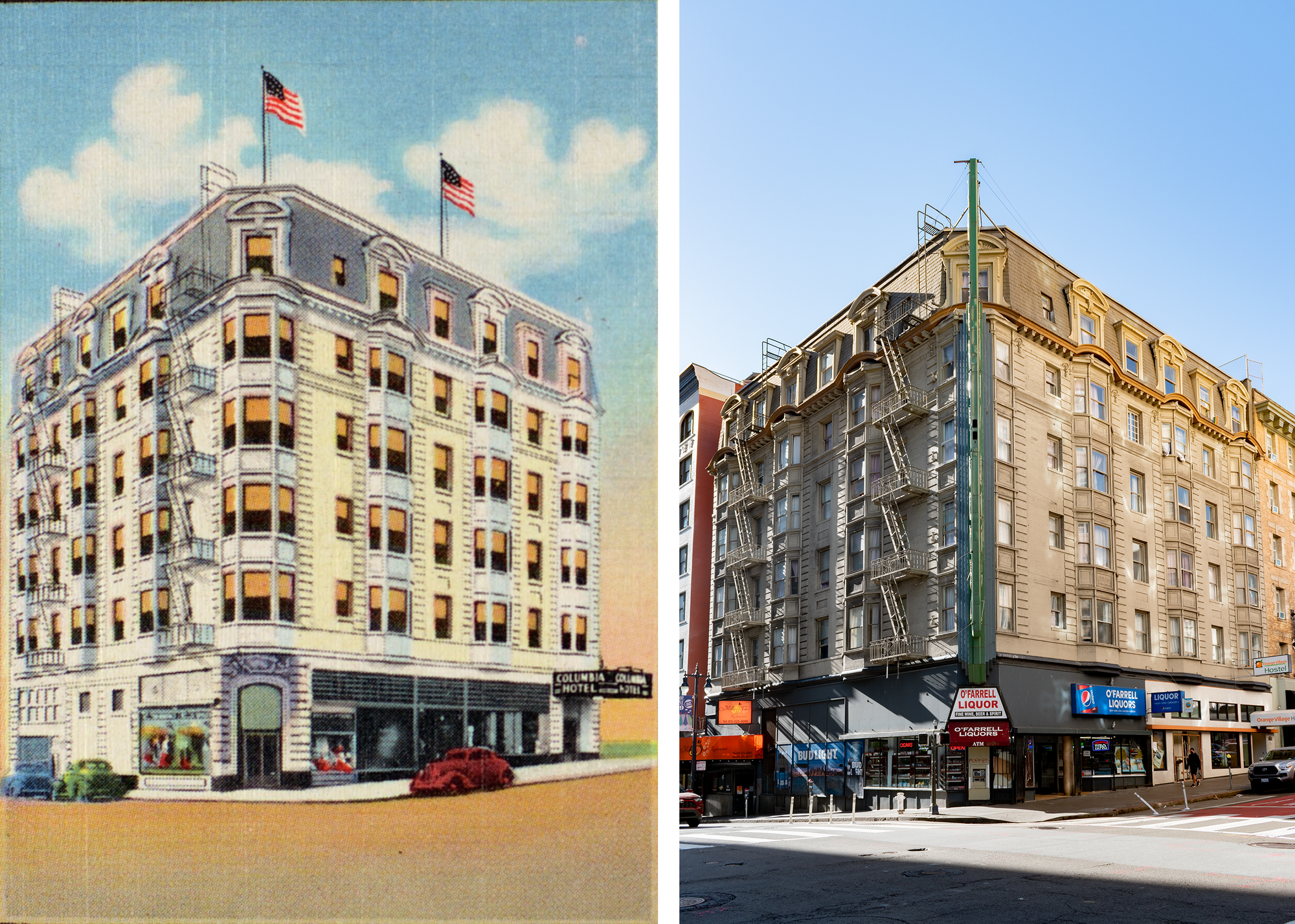
So, what's changed? The SF Weekly described it as fire-scarred because it partially burned in the 1990s, but even with two fires, a bomb scare, and relentless development pressure, the Columbia looks mostly the same as it did in 1942. There have been some changes to the first floor as the retail tenants changed (that little emblem above the corner entrance, all those quoins, a much-shrunken canopy for the hotel entrance) and they obviously added that big six-story corner marquee at some point, but at a fundamental level the Columbia hasn't changed much. That lack of change is kind of a mixed bag in my opinion—it's valuable that it's been maintained as a place with affordable, flexible housing in a city that has become impossibly expensive, but San Francisco's population has doubled since the Columbia opened in 1911, and the city barely holding the line with those century-old units isn't enough.
Designed by Sutton & Weeks, with a big mansard roof and Renaissance Revival elements, the Columbia opened in 1911. This commission came towards the end of Sutton & Weeks' partnership, saw them design a bunch of apartments, residential hotels, and warehouses across the Bay Area from 1902 until 1910, when Sutton moved back to Oregon. The Columbia was included as a contributing building to the Uptown Tenderloin Historic District when it was listed on the National Register of Historic Places in 2009.
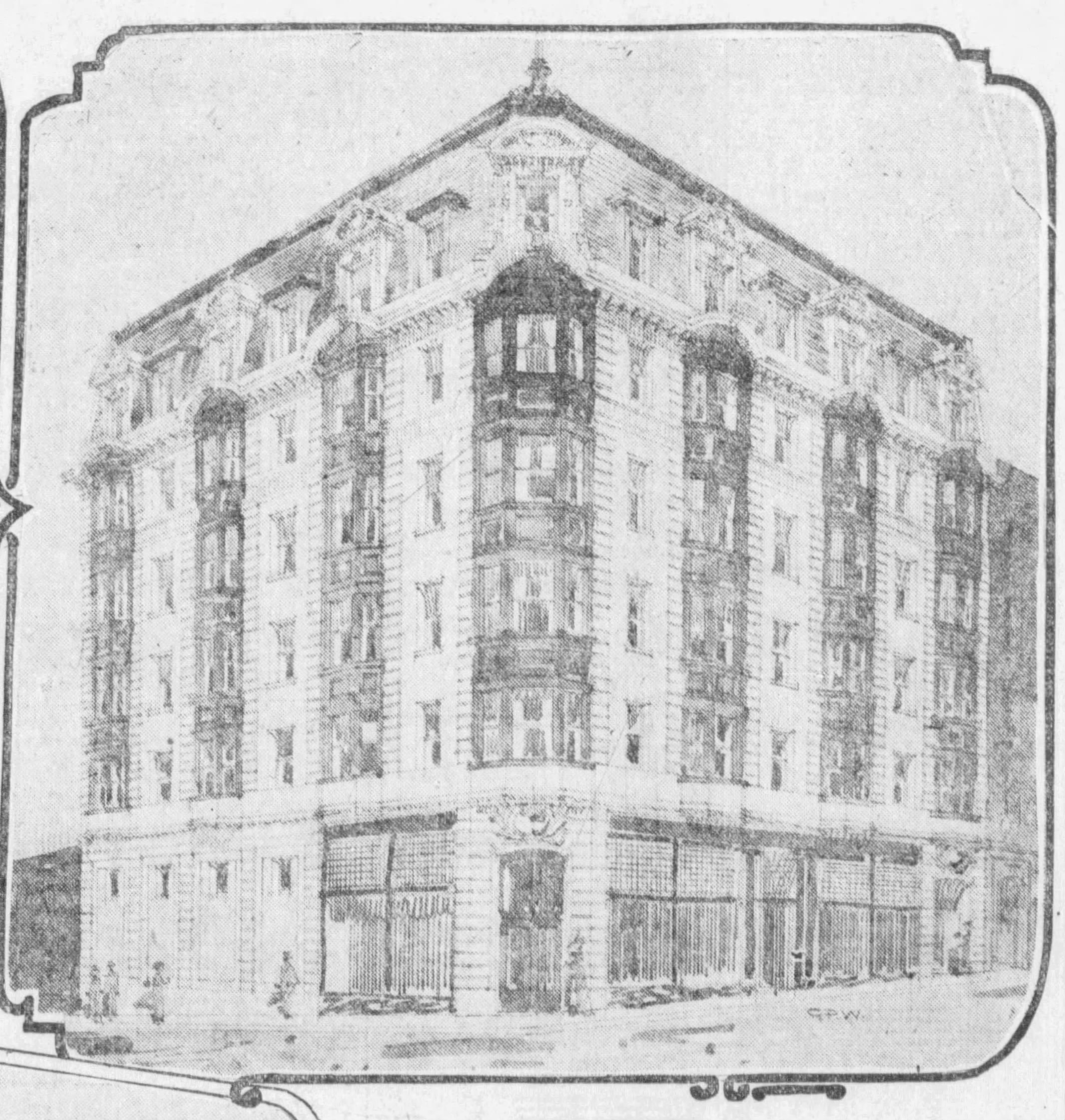
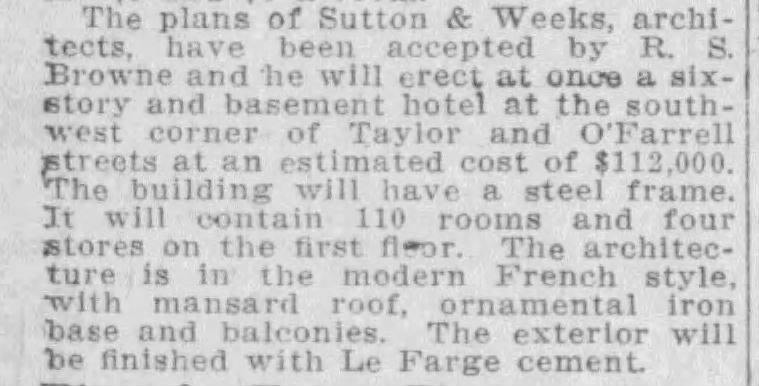


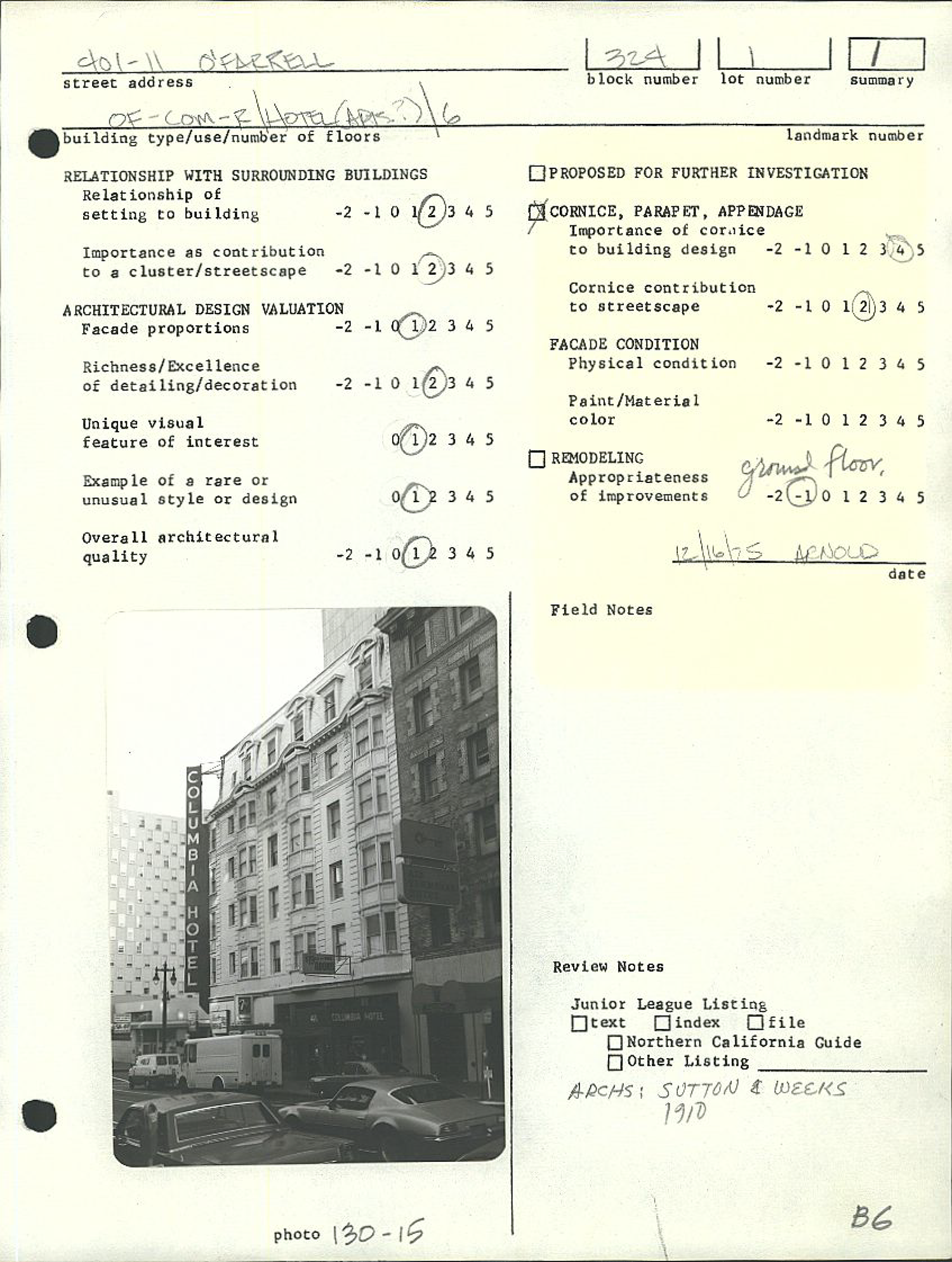
1909 rendering | 1909, Sutton & Weeks' plans accepted | 1968, OpenSFHistory / wnp25.6405 | 1976 Survey, DCP
When it opened in 1911, the Columbia catered to a mid-range clientele, offering single and double rooms with and without private bathrooms. Residential hotels were a key component of the American housing market for decades, providing flexible, cheap, and independent living options for people of diverse social classes for the short or long term. Here, even as owner disinvestment battered the building and as SRO units disappeared, rents at the Columbia stayed pretty steady in the $400-$600 a month range into the 1990s.
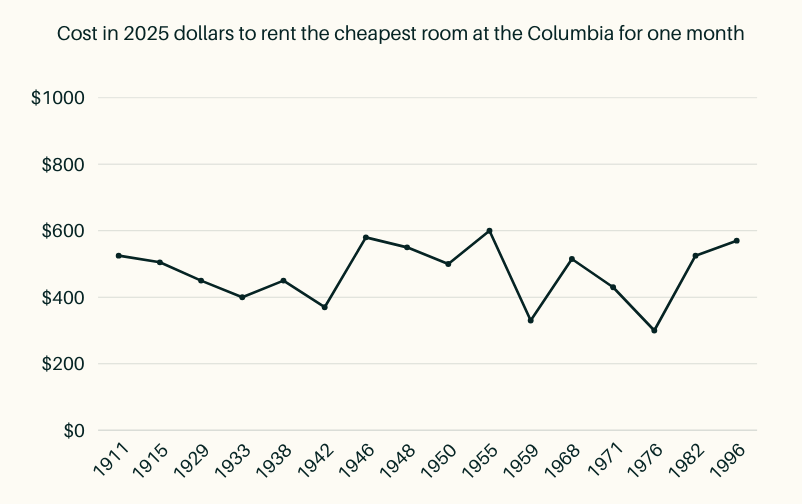
That continued affordability didn't come easy, especially as San Francisco lost more than 40% of its SROs to tourist hotel conversion and demolition between 1975 and 1988. The Columbia's owners have tried to cash in with a tourist hotel conversion and partially succeeded, turning a portion of the building into the Orange Village hostel, but tenant activism in the form of rent strikes and boycott campaigns, coupled with legislative tools like the 1981 Hotel Unit Conversion and Demolition Ordinance, have combined to (mostly) keep the Columbia as an SRO. In the early 90s, the Columbia had 123 SRO rooms, but by 2011 the breakdown was 85 residential and 38 tourist.

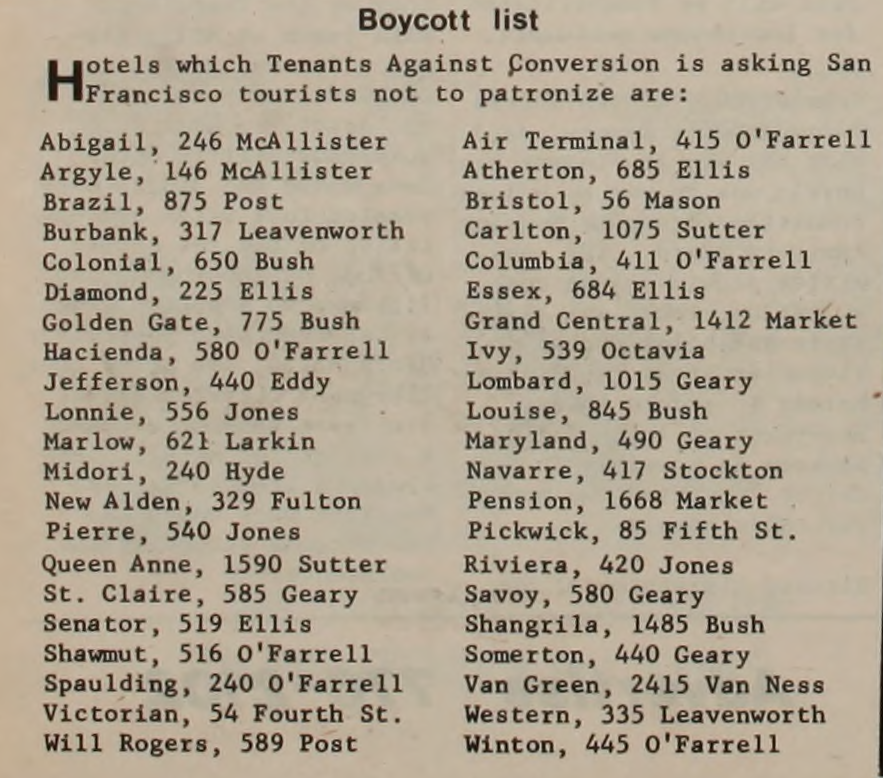
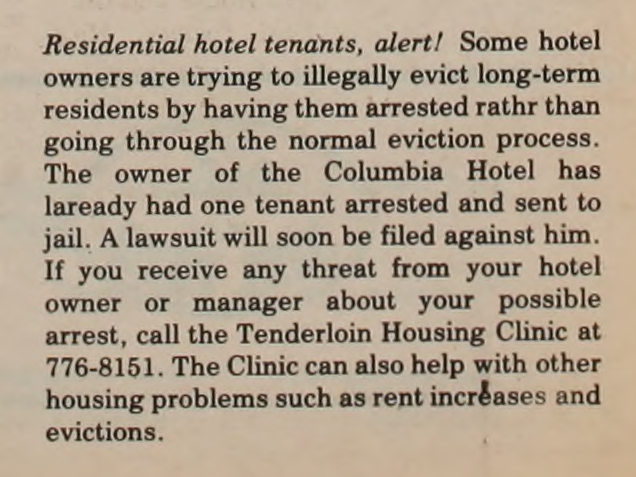
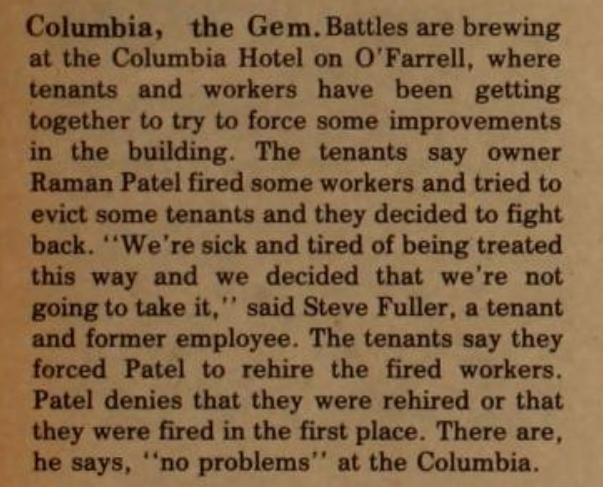
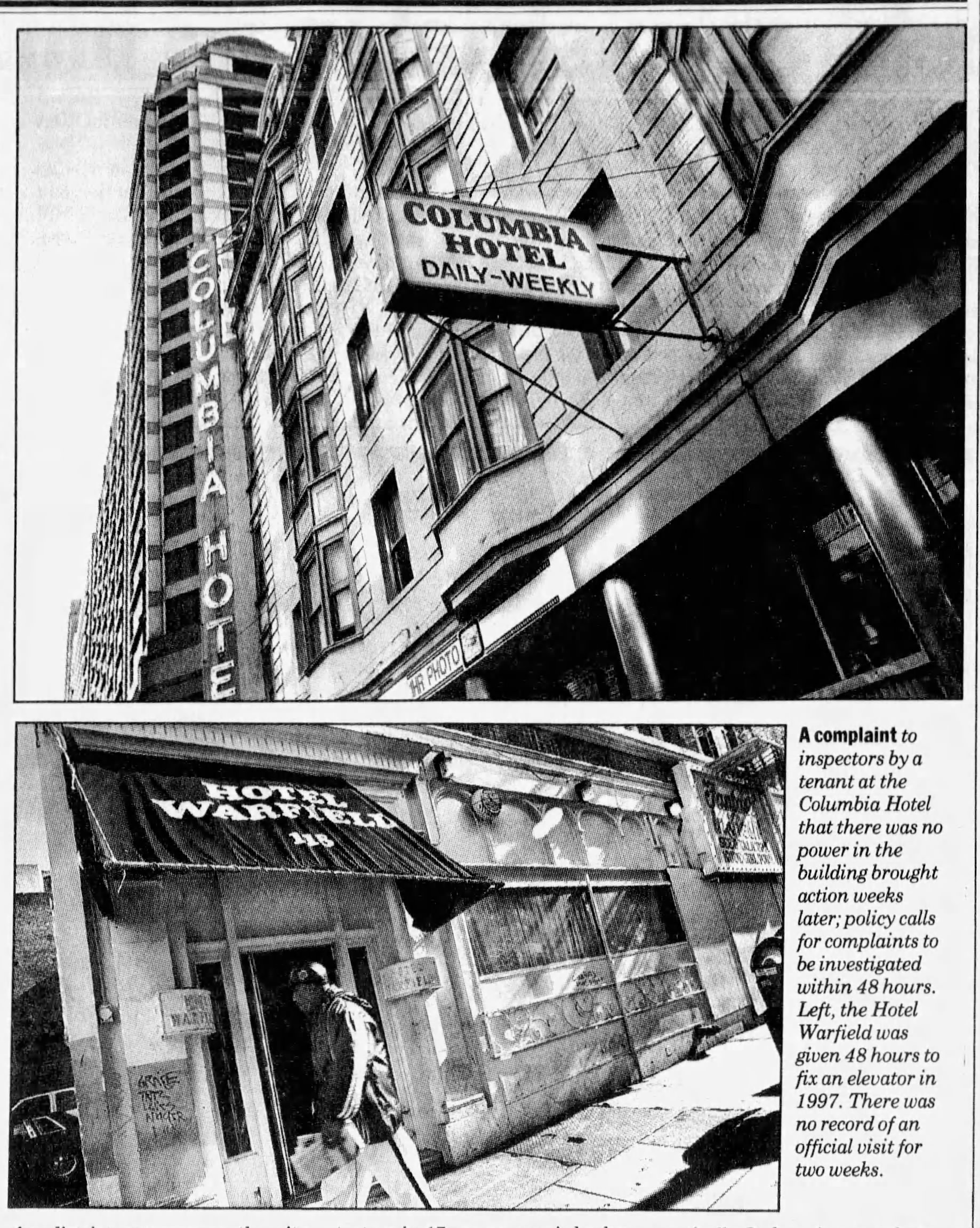
1981 rent strike, Bay Guardian, the Internet Archive | 1981 hotel boycott list, the Tenderloin Times, the Internet Archive | 1982 residential hotel alert, the Tenderloin Times, the Internet Archive | 1982 battles brewing, the Tenderloin Times, the Internet Archive | 1999, tenants go without power
Behind those numbers lies a whole lot of conflict and underhanded behavior, though. When the building partially burned in the 1990s, the owner let it sit without repairs for nearly a year—pretty clearly an attempt to chase out tenants. Groups like the the Tenderloin Housing Clinic and the Central City SRO Collaborative continue to monitor developments at the Columbia to protect its affordability and the rights of its tenants.
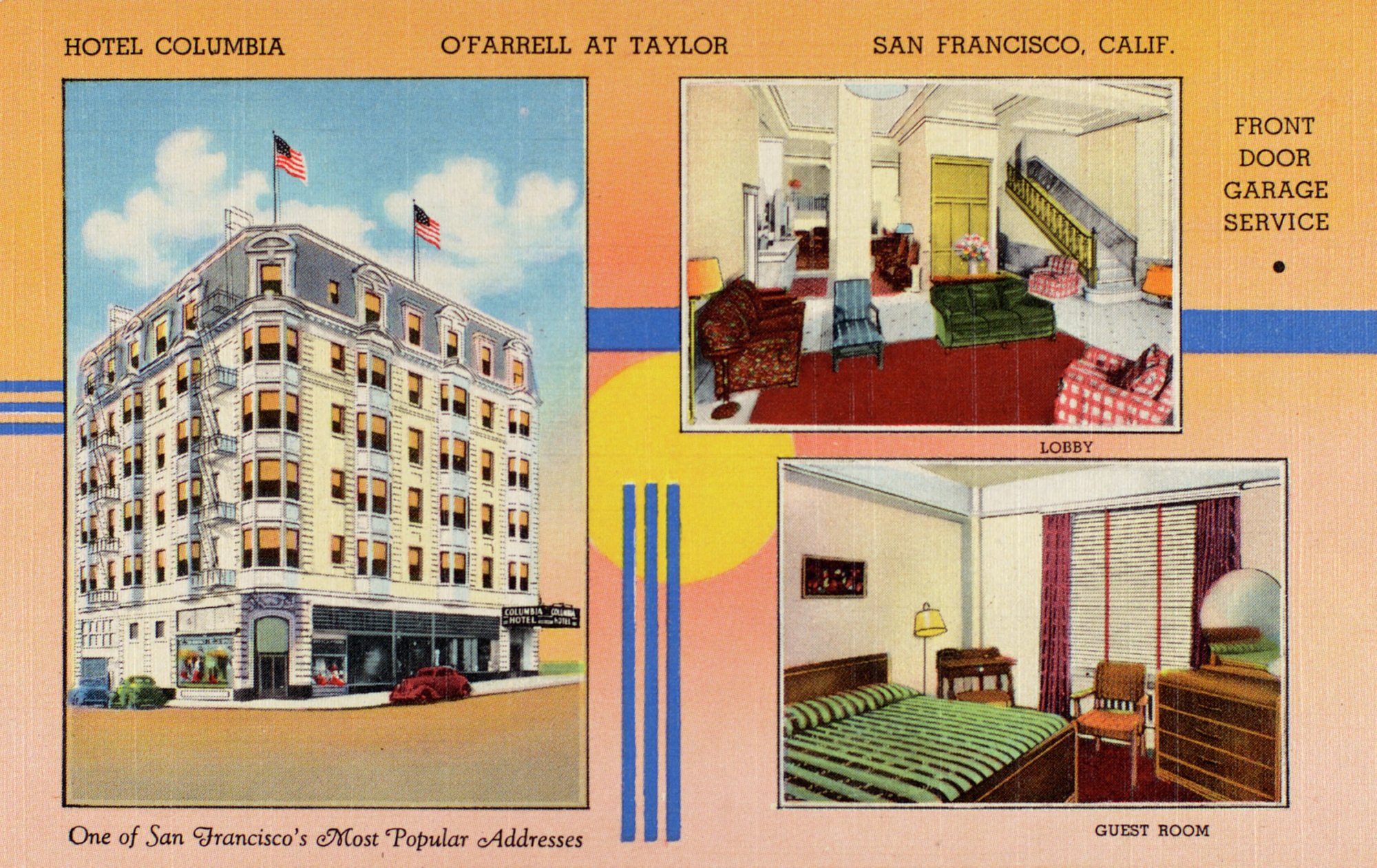
Production Files
Further reading:
- "Heartbreak Hotel"
- Living Downtown: The History of Residential Hotels in the United States by Paul Groth
- Uptown Tenderloin Historic District NRHP Nomination Form

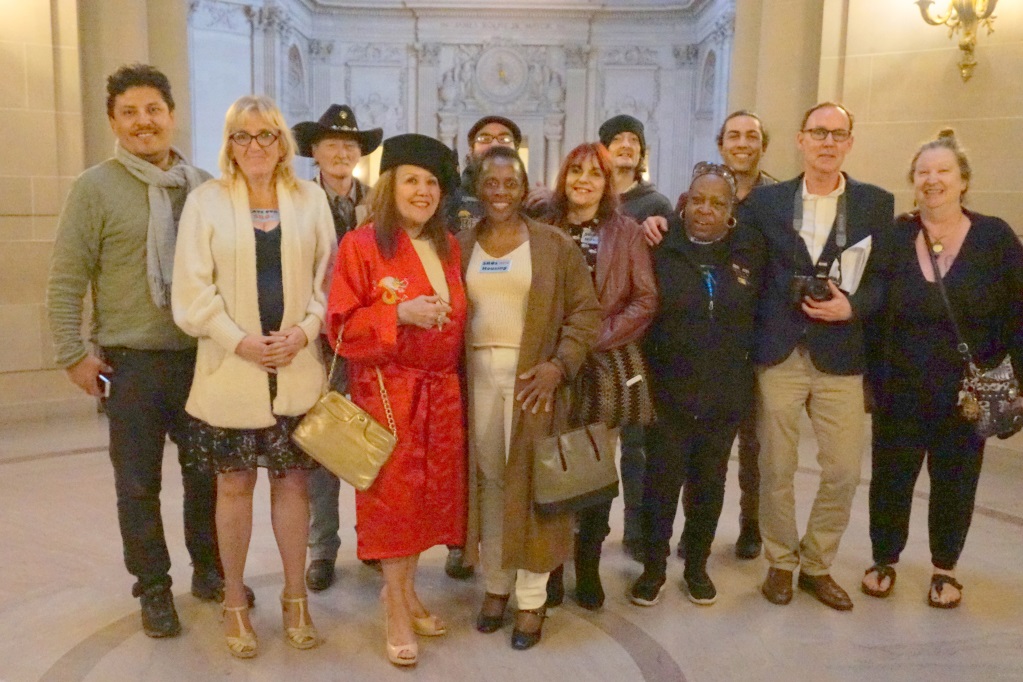
Always catches me off guard how empty the Tenderloin still was in 1913, as you can see in these fire insurance maps.
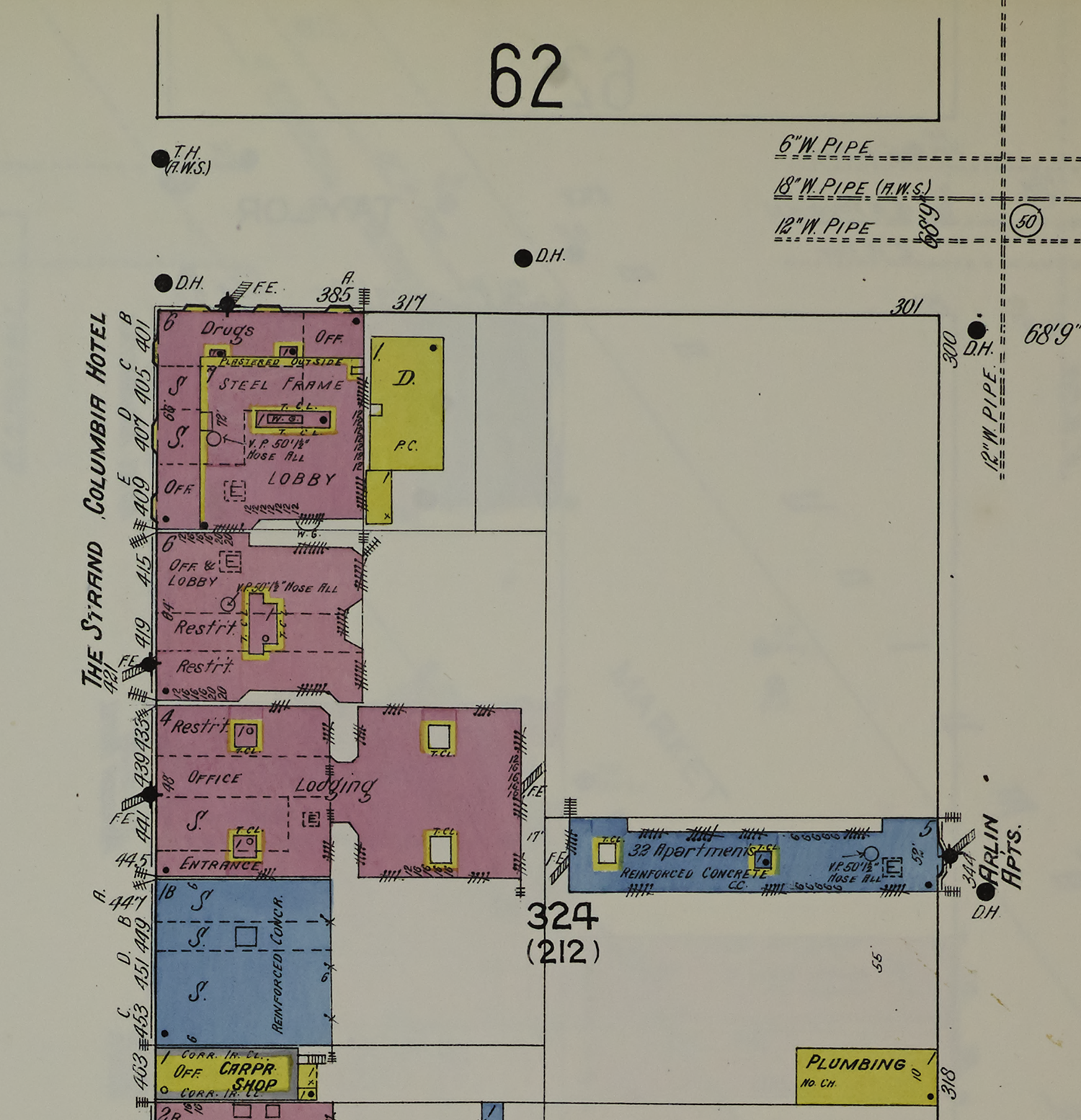
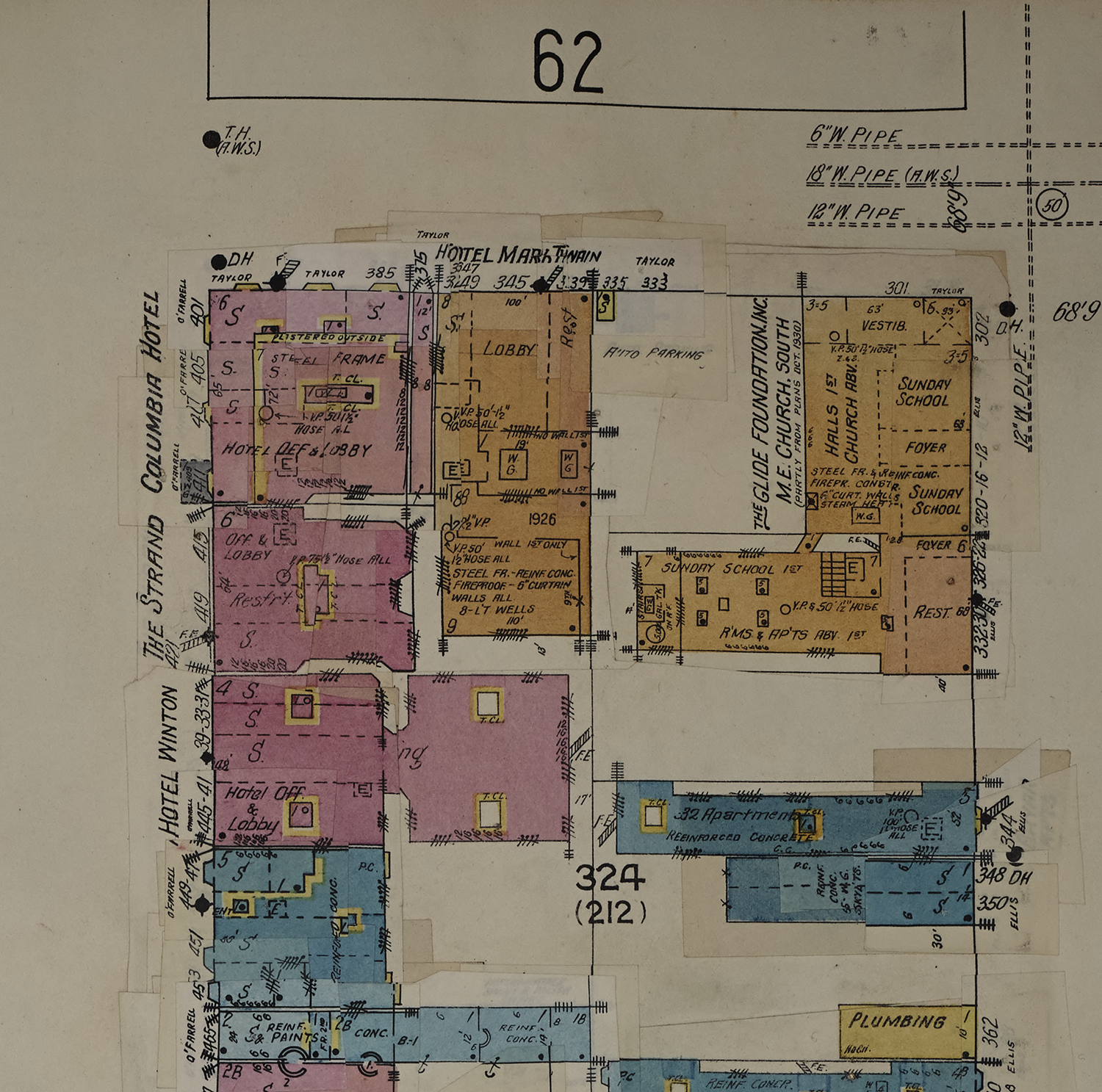
1913 Sanborn Map, Library of Congress | 1950 Sanborn Map, Library of Congress
Some of the other extent Bay Area buildings designed by Sutton & Weeks include the Baker Hamilton Building (601 Townsend), the Kenilworth Apartments, Riordan's Warehouse (701 Minnesota), the Nordwell Building (617 Battery), and the Strand Hotel next door to the Columbia (419 O'Farrell). Demolished buildings include the Farmers and Merchants Savings Bank in Oakland and a bunch of residences and apartment buildings.
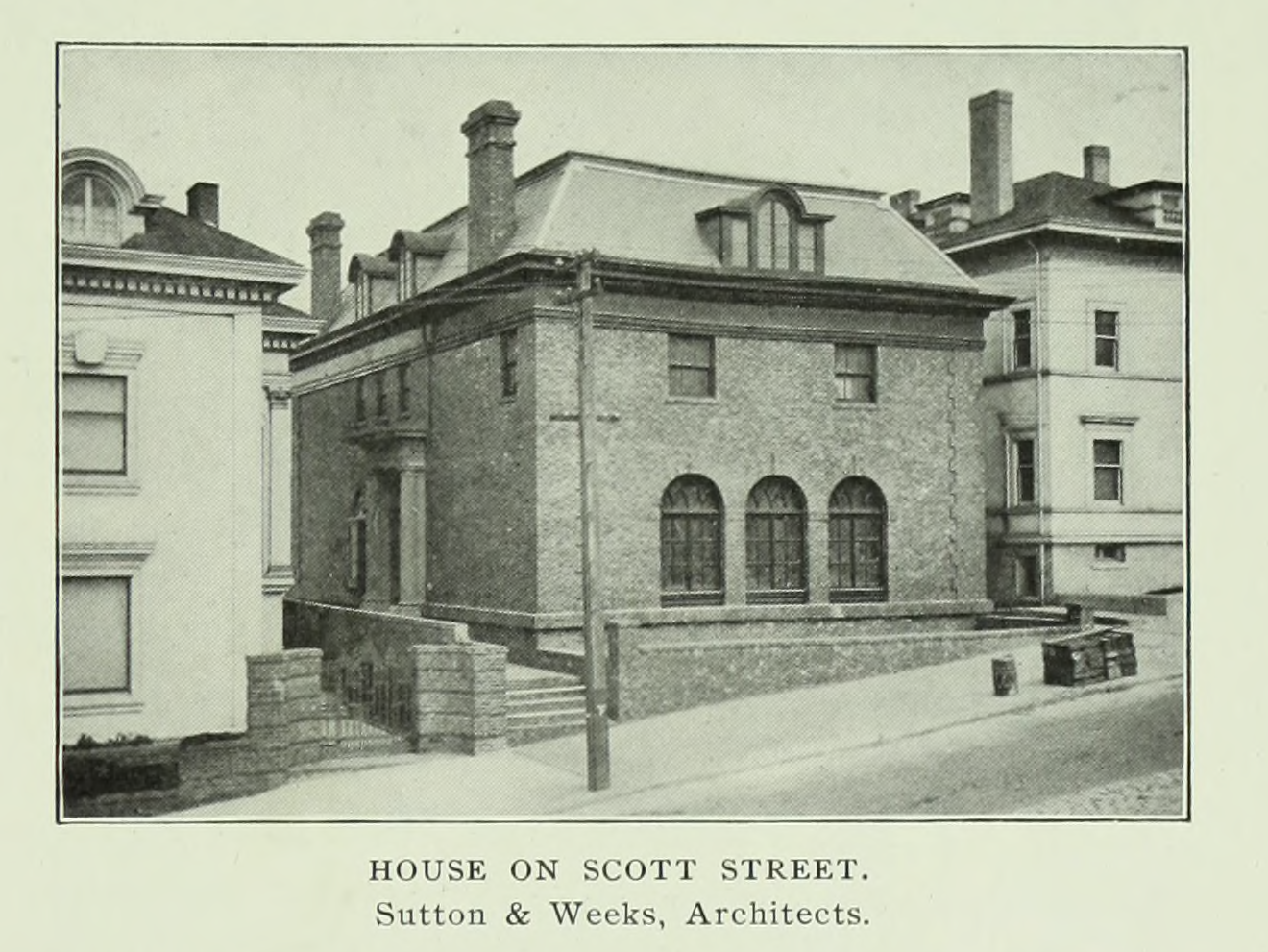
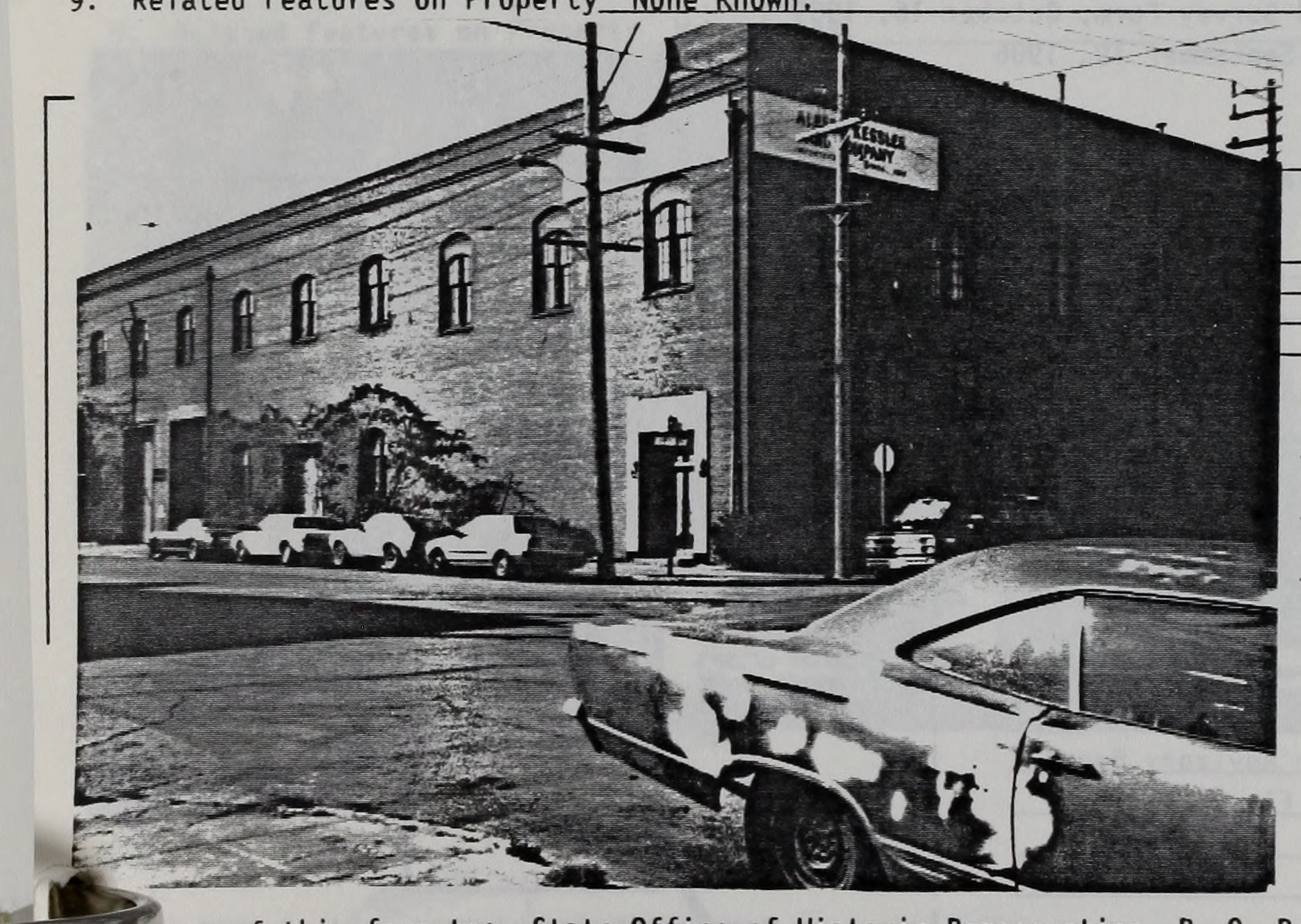
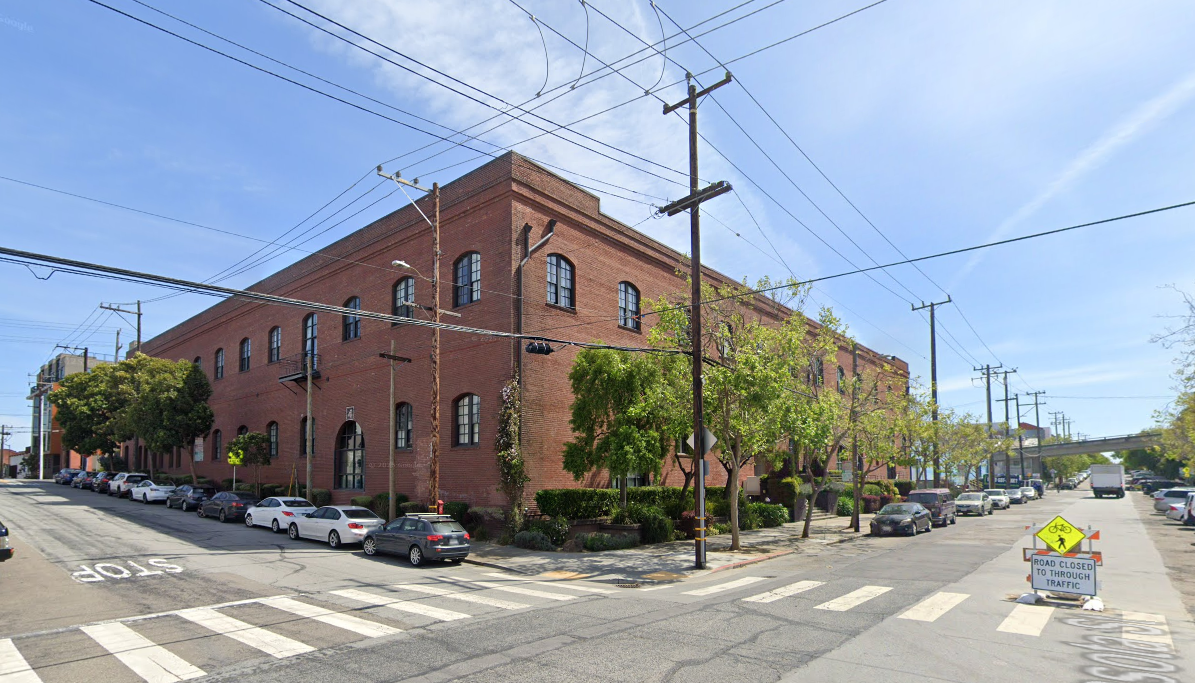

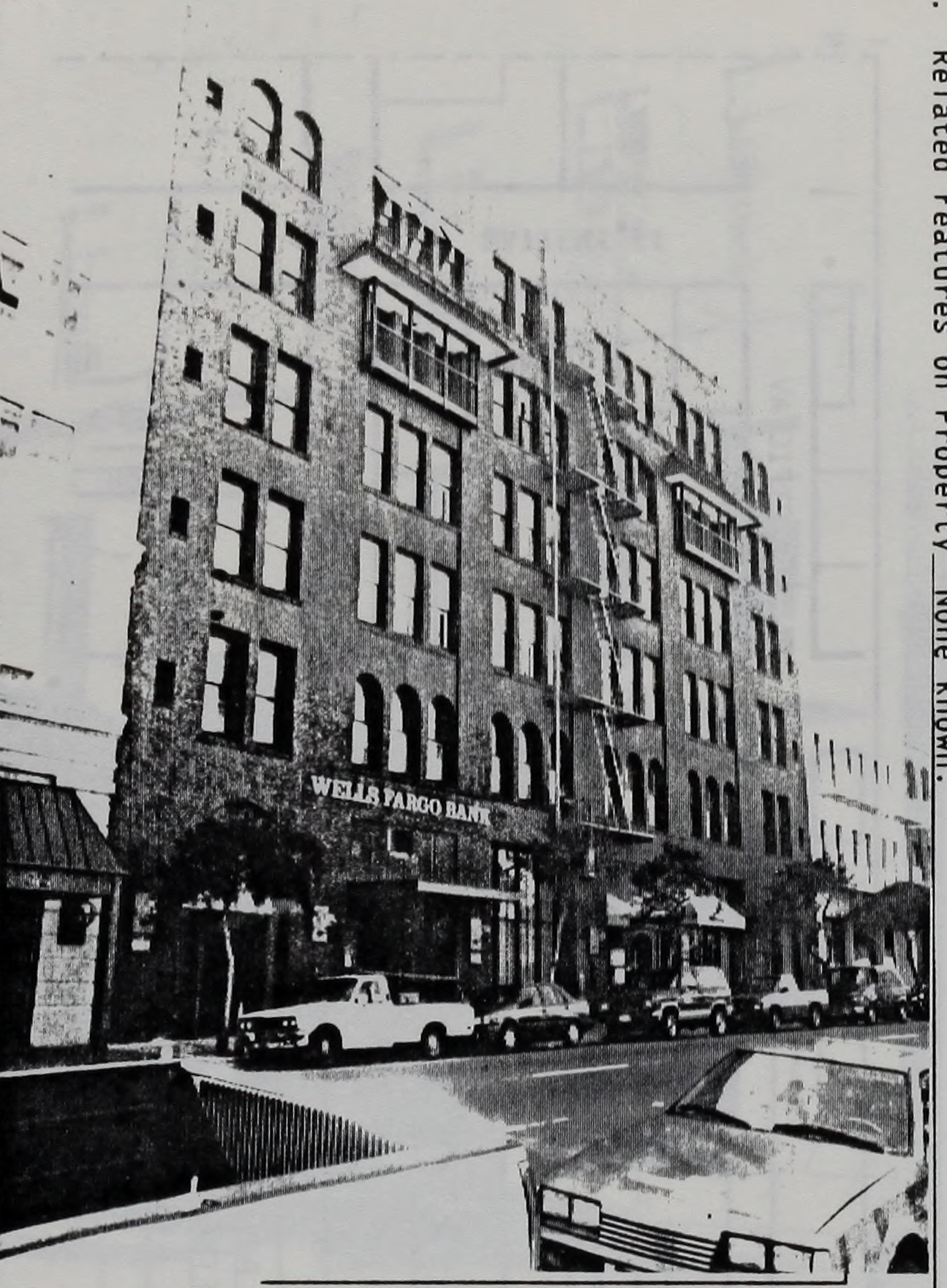
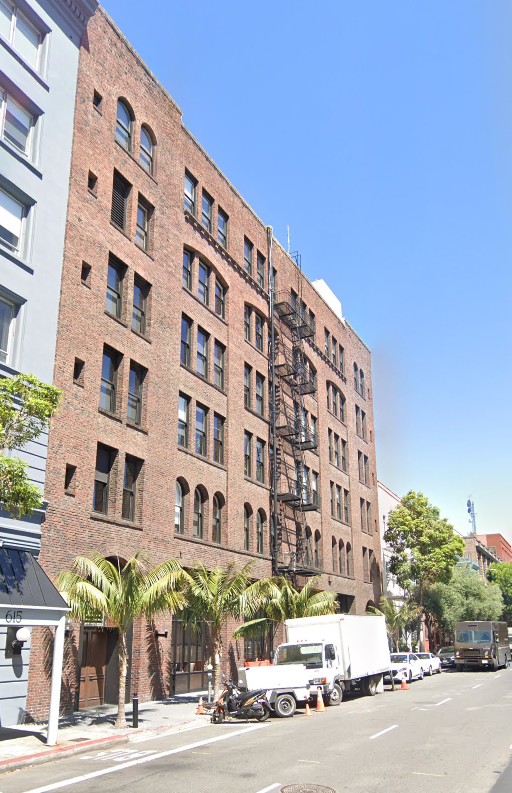
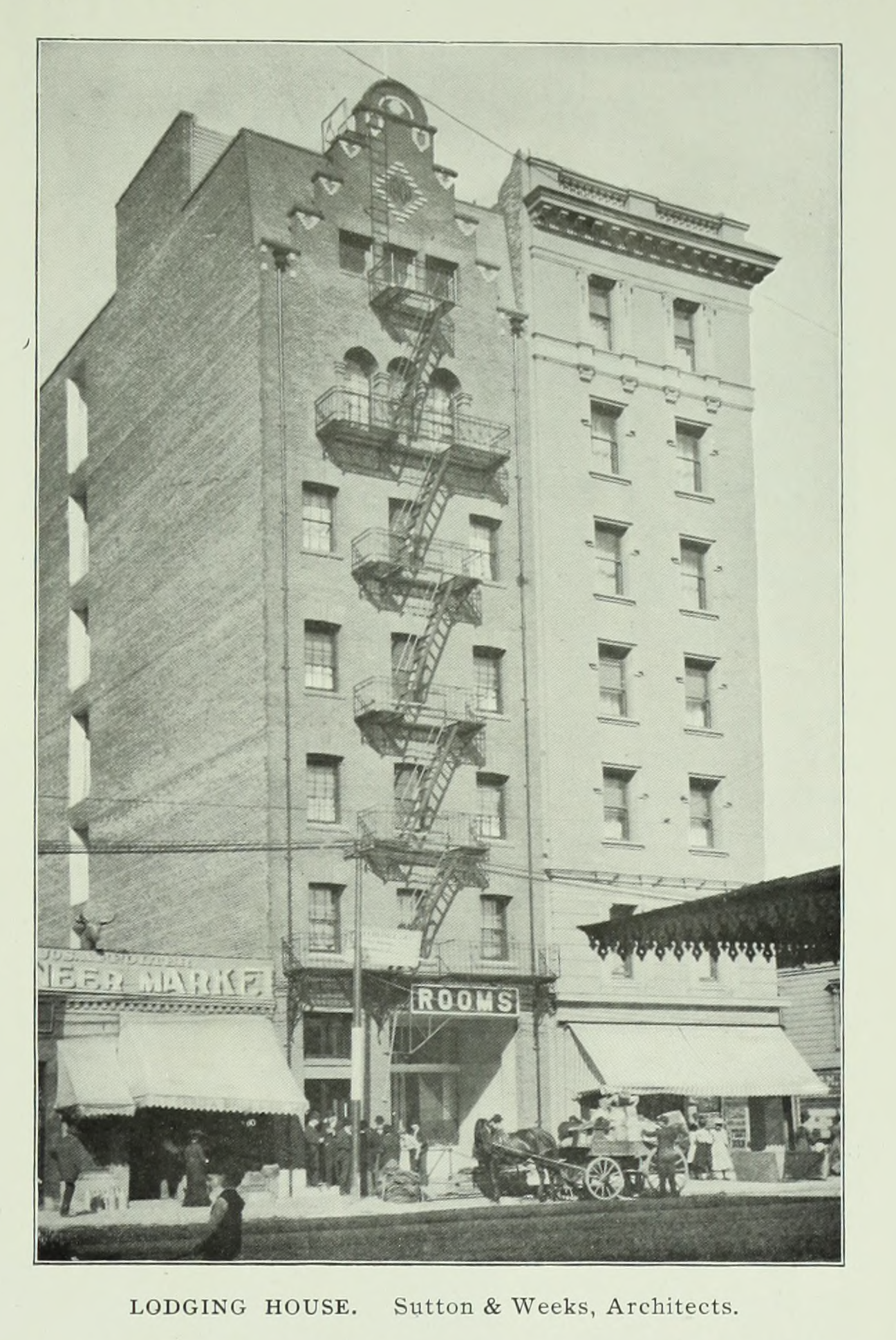
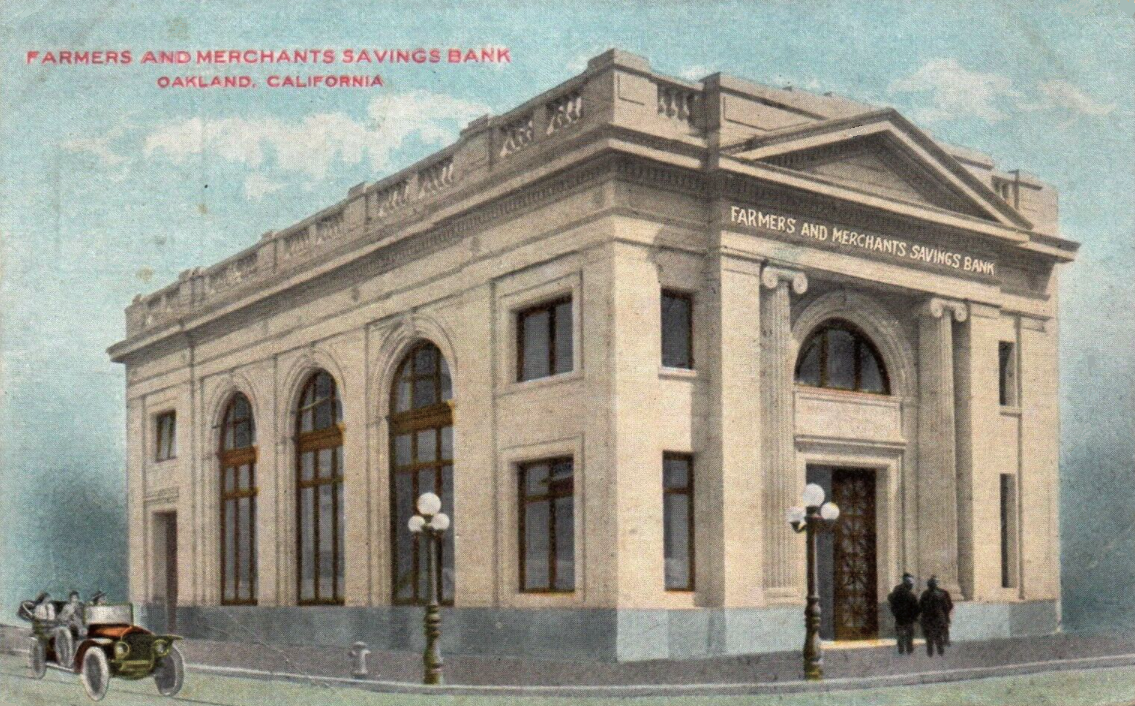
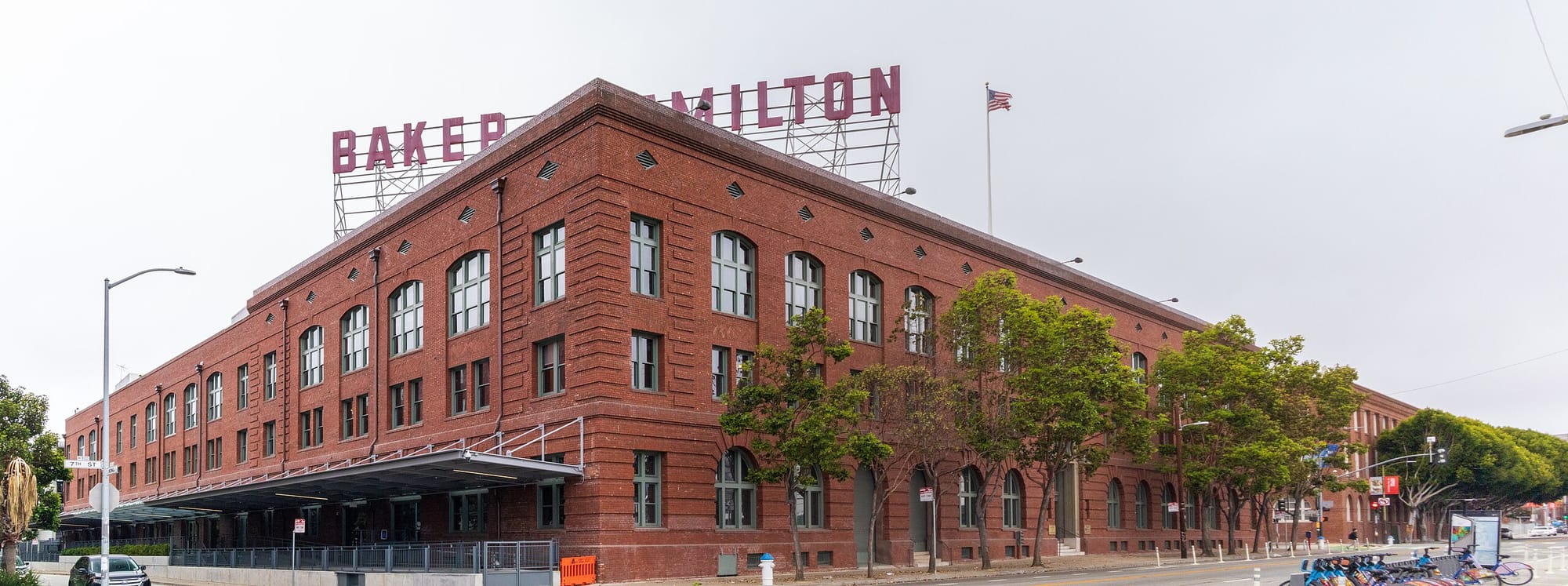
House on Scott Street, 1904, the Brickbuilder, the Internet Archive | Riordan's Warehouse, 1990, Architectural/historical survey of unreinforced masonry building construction in San Francisco from 1850 to 1940, San Francisco Landmarks Preservation Advisory Board via the Internet Archive | Riordan's Warehouse, 2022 Google Streetview | the Strand Hotel, 2025 Streetview | Nordwell Building, 1990, Architectural/historical survey of unreinforced masonry building construction in San Francisco from 1850 to 1940, San Francisco Landmarks Preservation Advisory Board via the Internet Archive | Lodging House, 1904, the Brickbuilder, the Internet Archive | Farmers & Merchants Savings Bank, Oakland, PCAD | Baker Hamilton Building, 2021, Michael Mangus, Wikimedia Commons
The Columbia has also been the site of its share of tragedy.

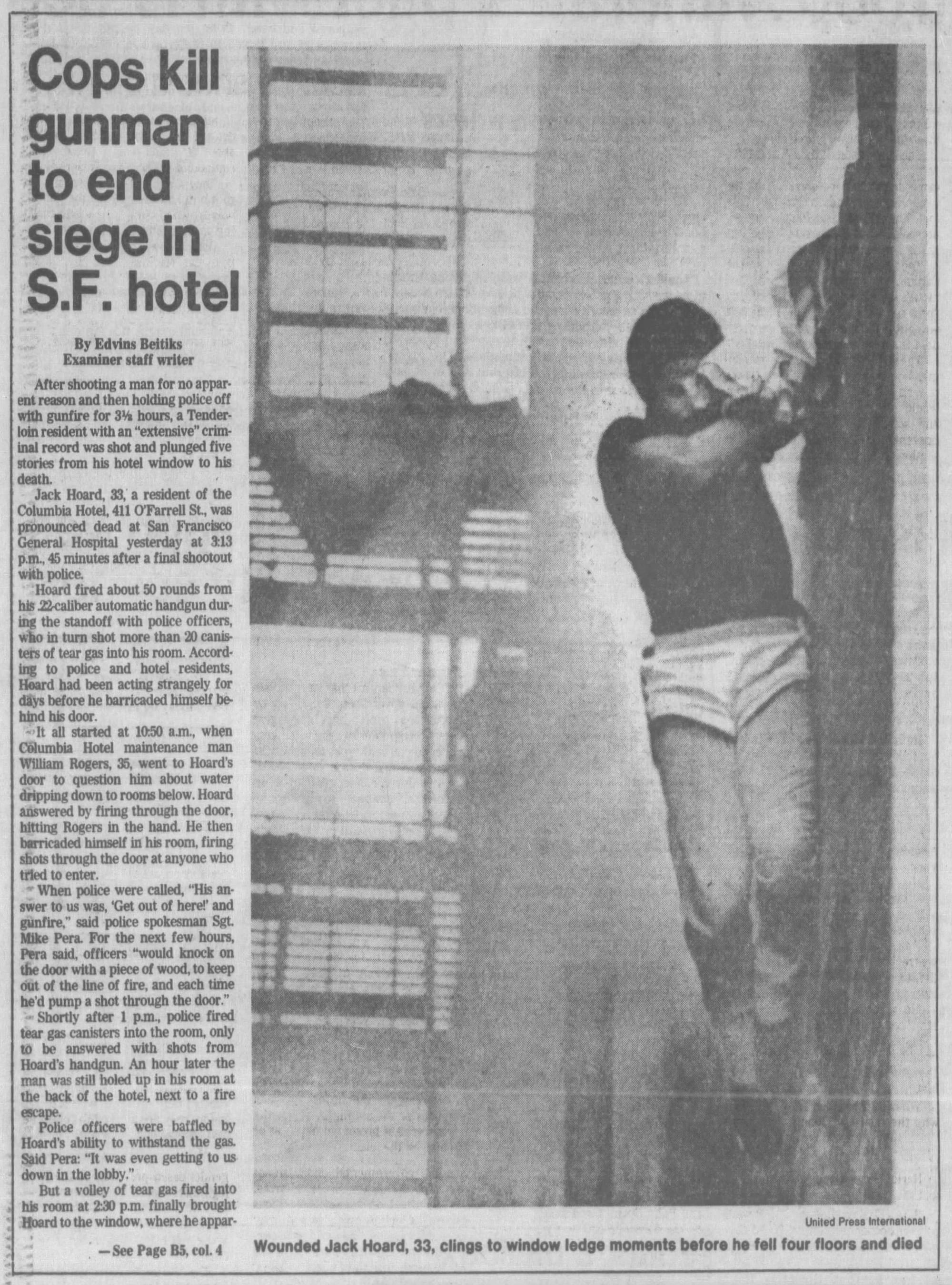
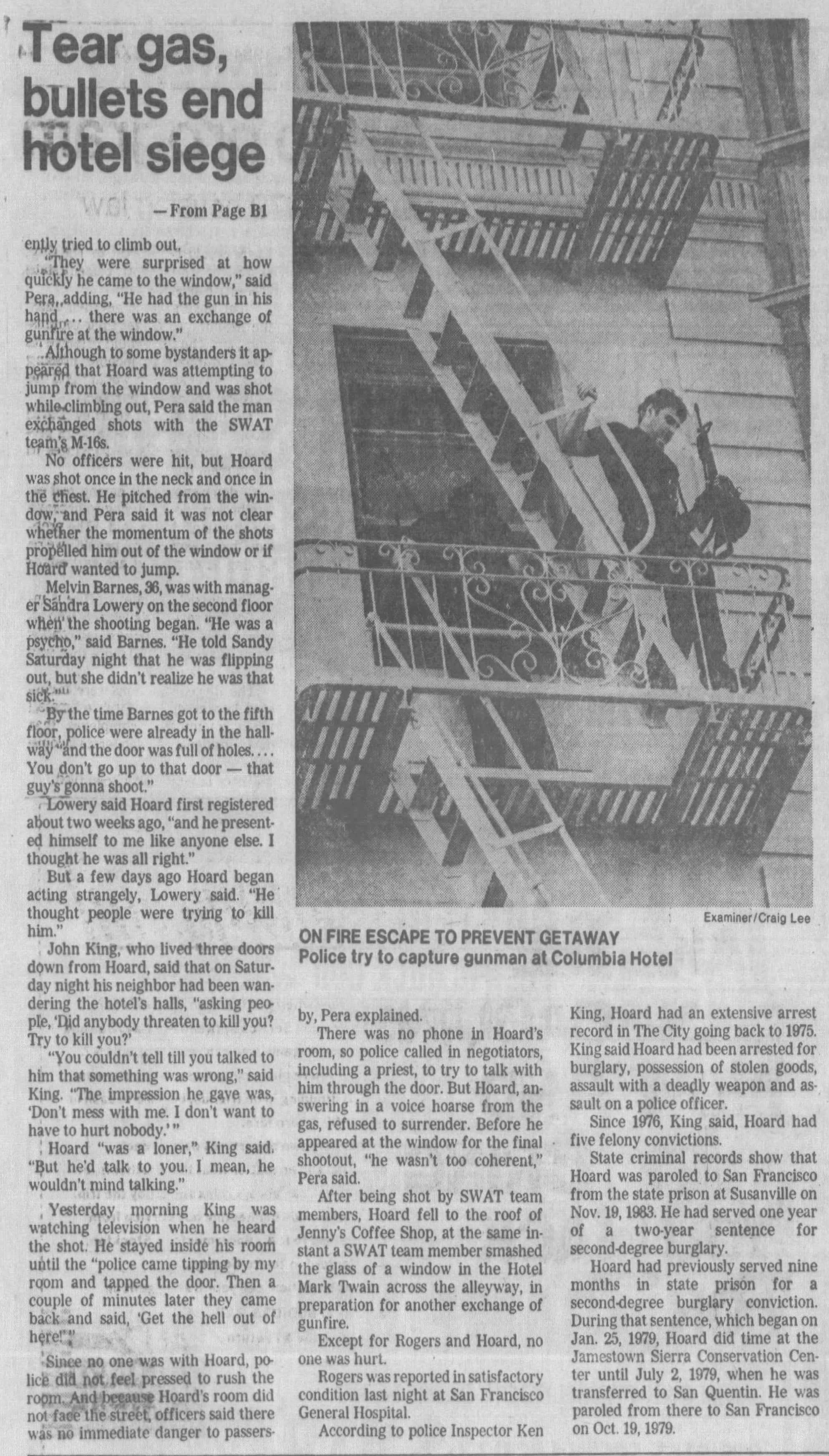
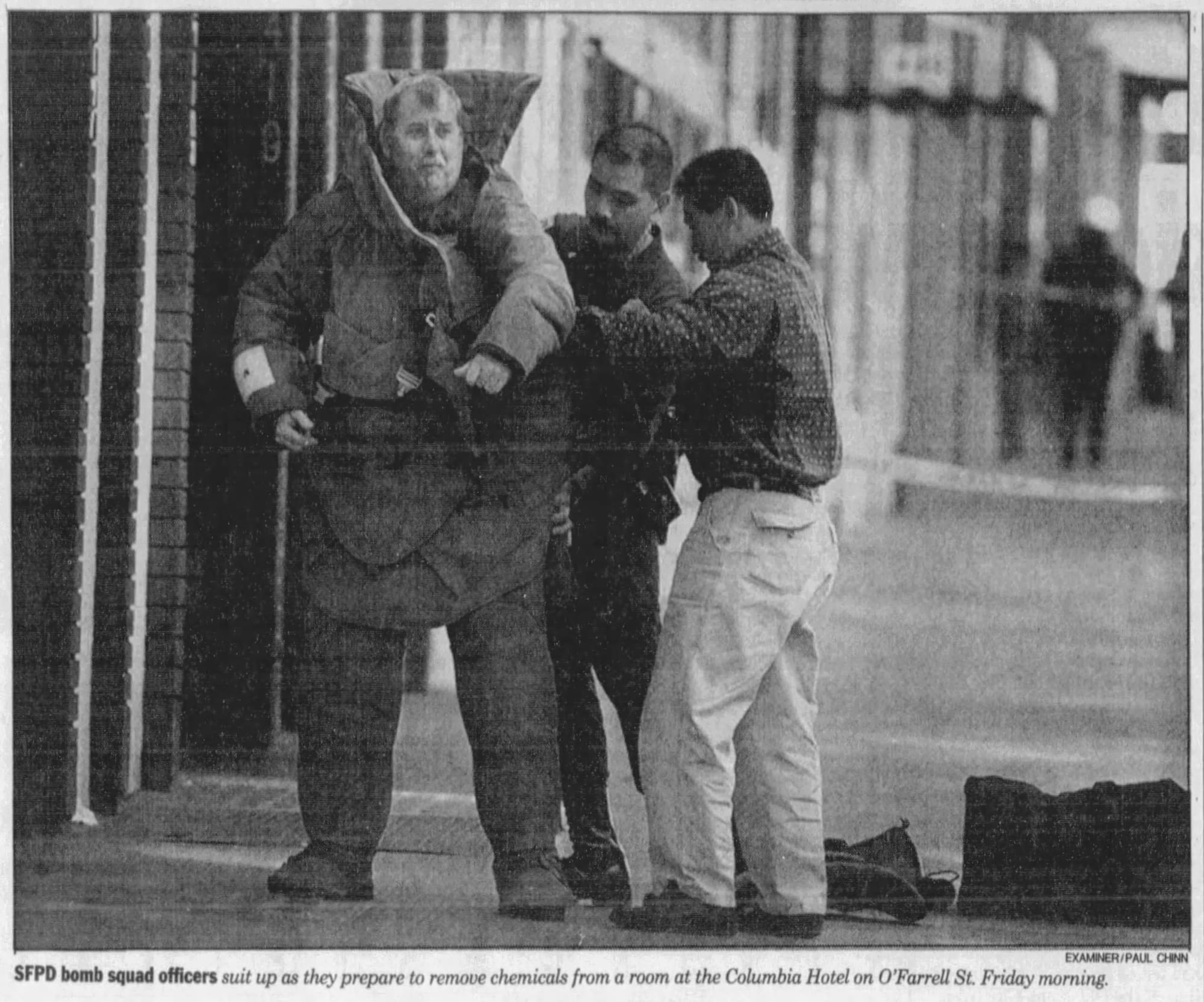
1947 fire | 1984 siege | 1995 bomb and chemical weapon scare
Some of the ads I used to make that graph of rent over the years.


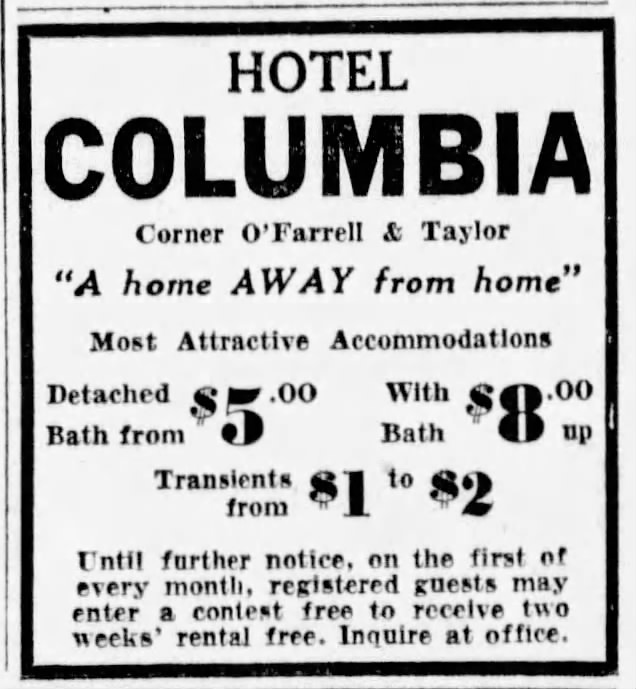





1911 ad | 1915 ad | 1938 ad | 1946 ad | 1950 ad | 1959 ad | 1968 ad | 1982 ad
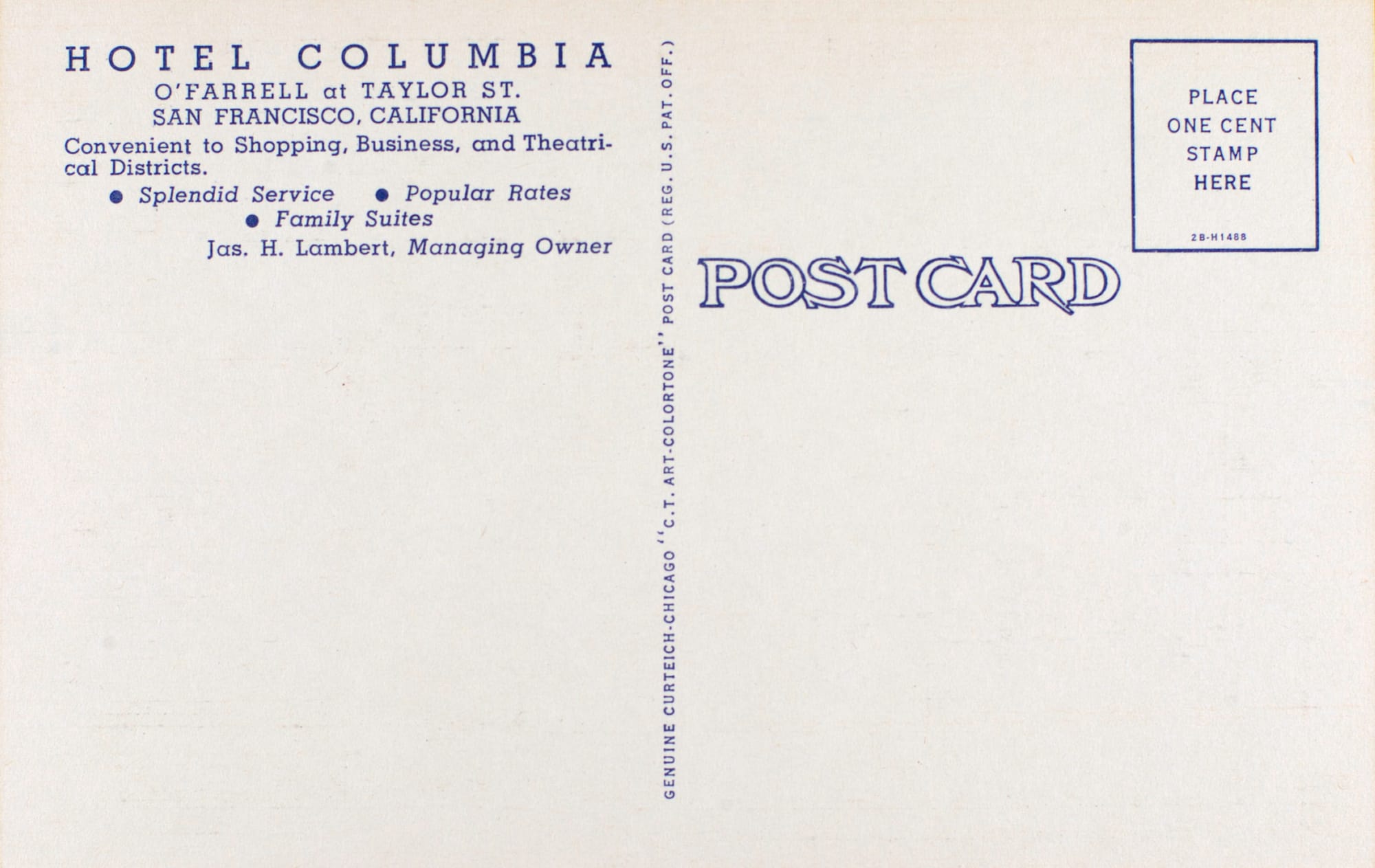






Member discussion: